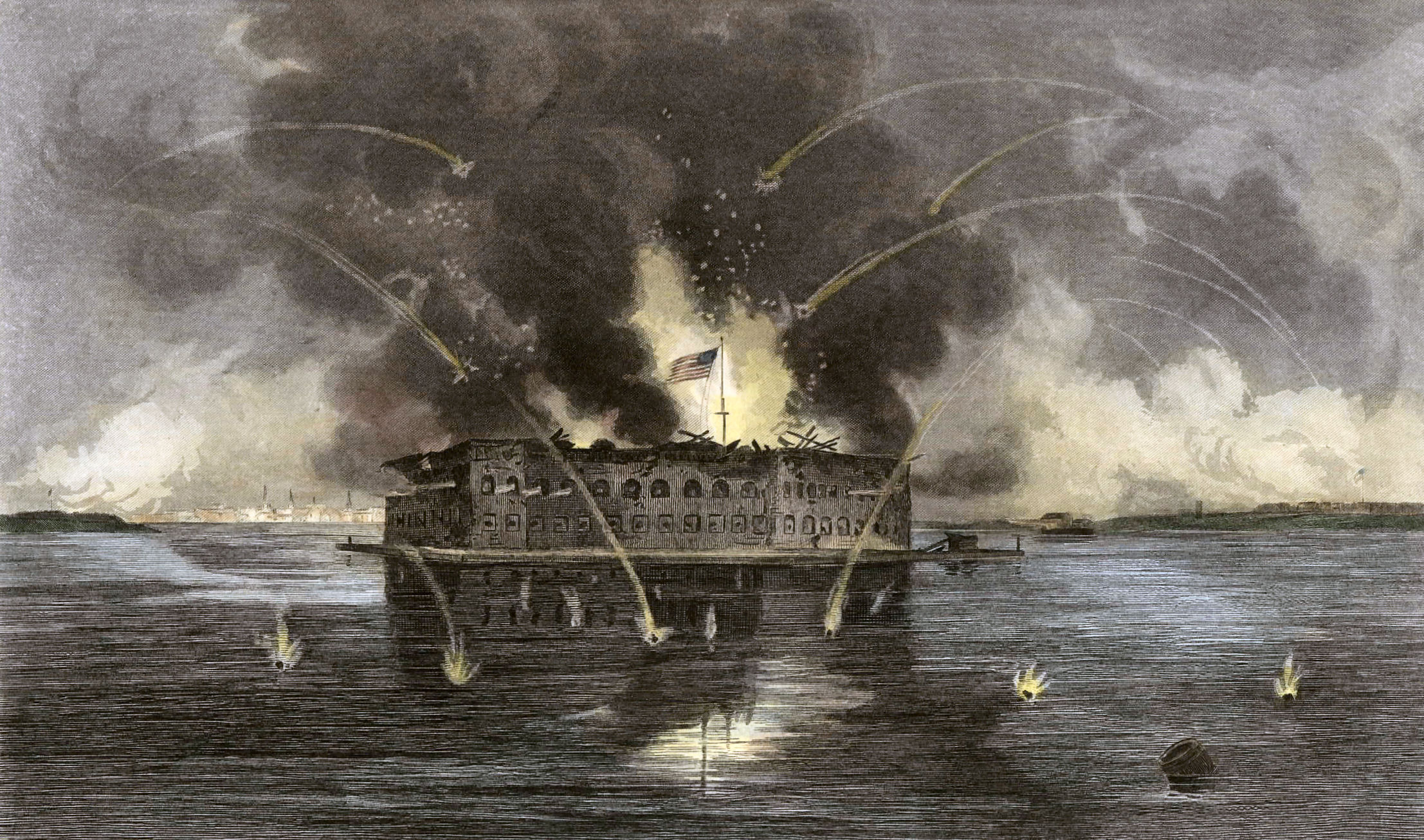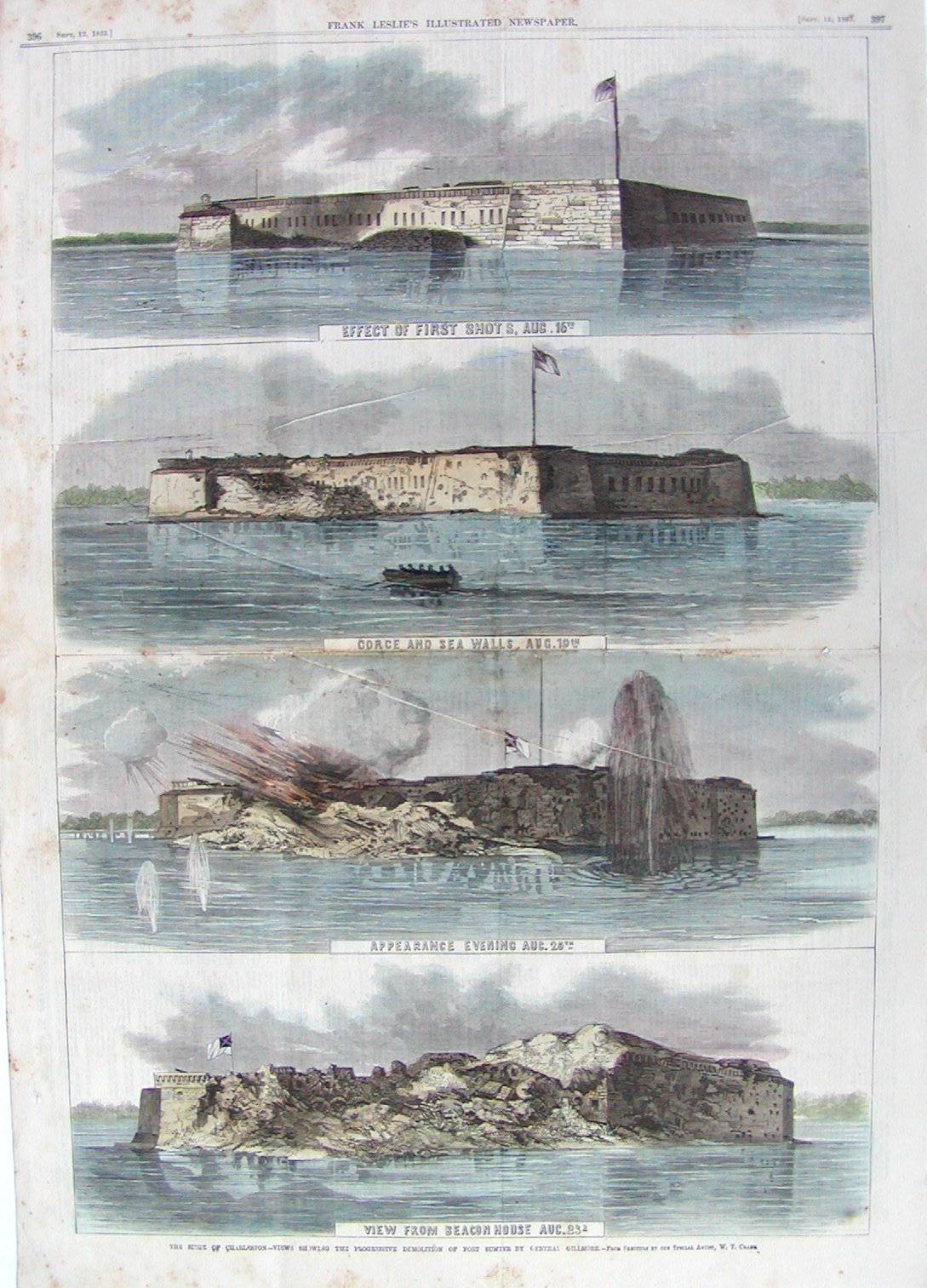 As with space, so with time. This commemoration of the American Civil War should not be a sudden occasional glimpse of some stuff that happened an arbitrary amount of time ago, but a way to understand the context of the unfolding events of the past, and their relationships to each other, by making an analogy to the timestream that we experience every day. It's low-bandwidth approach to appreciating history: rather than observing deeply for a short period of time, observe shallowly for a long period of time.
As with space, so with time. This commemoration of the American Civil War should not be a sudden occasional glimpse of some stuff that happened an arbitrary amount of time ago, but a way to understand the context of the unfolding events of the past, and their relationships to each other, by making an analogy to the timestream that we experience every day. It's low-bandwidth approach to appreciating history: rather than observing deeply for a short period of time, observe shallowly for a long period of time. Five months and 150 years ago, in November 1860, Abraham Lincoln was elected president of the United States, and beginning in December, led by South Carolina, the Deep South seceded and seized local federal bases and depots. In the uncertain months of early 1861, South Carolina repeatedly called for the evacuation of Fort Sumter, and the first shots of the war were fired in January to drive off a steamer attempting to resupply the fort. Lincoln took office on March 4, and eventually sent ships to resupply the fort. The morning after the first ships arrived on April 11, Confederate batteries opened fire, and the Civil War began. Virginia seceded on April 17; Robert E. Lee resigned on April 20 to go south; and a week later West Virginia seceded from Virginia. In May, Arkansas and Tennessee seceded, and Kentucky declared neutrality. Not until July was the first major battle of the war fought, at Bull Run, as Washingtonians picnicked.
In the western theater, Kentucky's neutrality would hold until September, when Confederate and Union forces attempted to secure the Ohio River valley at the river's mouth. But the major battles of Kentucky and Tennessee happened in 1862, when the Union captured Fort Donelson on the Cumberland River in February, pushing the front south to the Tennessee River, and the Confederacy was turned back from the Kentucky campaign at the Battle of Perryville in October.
In November 2010, by contrast, the Republicans made significant gains in the House in the midterm elections, and the country's political attention has been focused on conflicts over government spending, federal debt, and military action in the Maghreb. Months will trickle by in the ongoing debates, as the country drifts closer to the 2012 presidential elections, already underway. It's been a similar amount of time from the 2010 elections as from Lincoln's election to Fort Sumter.
So, there are a couple of blogs launched to overview the commemoration of the Civil War as it proceeds: The Long Recall, a period blog of the Civil War, A House Divided at the Washington Post, and Disunion at the New York Times (timeline). A snippet:
Charleston Harbor, S.C., April 9, 1861The Civil War Trust has an animated map of the battle of Fort Sumter, among others. Public, professional, and amateur historians are writing many other blogs (1, 2, 3, 4, 5, 6, 7, 8 ) and lists ( 1, 2, 3, 4, 5, 6, 7 ).
After months of anxiety and expectation, there came at last a day of terrible clarity. For months, a single question had preoccupied the men of Fort Sumter’s beleaguered Union garrison, from their commander down to the lowliest private: what would the Lincoln administration do? Would it yield to Southern coercion and evacuate the fort, sending a signal to the world that it was ready to negotiate with the secessionists, and perhaps even let the slave states go in peace? Or would it send reinforcements and supplies to Charleston Harbor — and in so doing, quite possibly touch off civil war?
...the garrison had remained in a bizarre position of both power and powerlessness. One the one hand, as [fort surgeon Samuel Wylie] Crawford realized, they could at will change the course of American history, with a single cannon shot from one. On the other hand, Fort Sumter, which had looked so commanding and impregnable on their first arrival, was beginning to feel less so. On all sides of the harbor, they could see new artillery platforms under construction, cannons being wheeled into place, and in the distance bayonets flashing like a heliographed message, as recruits marched and counter-marched on the beach. Major Robert Anderson, the Union garrison’s commander, expressed it for most in the garrison when he wrote that he felt like “a sheep tied watching the butcher sharpening a knife to cut his throat.”

Images: National Park Service Fort Sumter Historic Images
EDIT
In Why They Fight: Civil War Re-enactors and the Battle over Historic Sites (Time), Gregg Segal has a series of photos of Civil War re-enactors in the modern locations of battles.
Baylor University has a digital version of the War of the Rebellion Atlas.



No comments:
Post a Comment